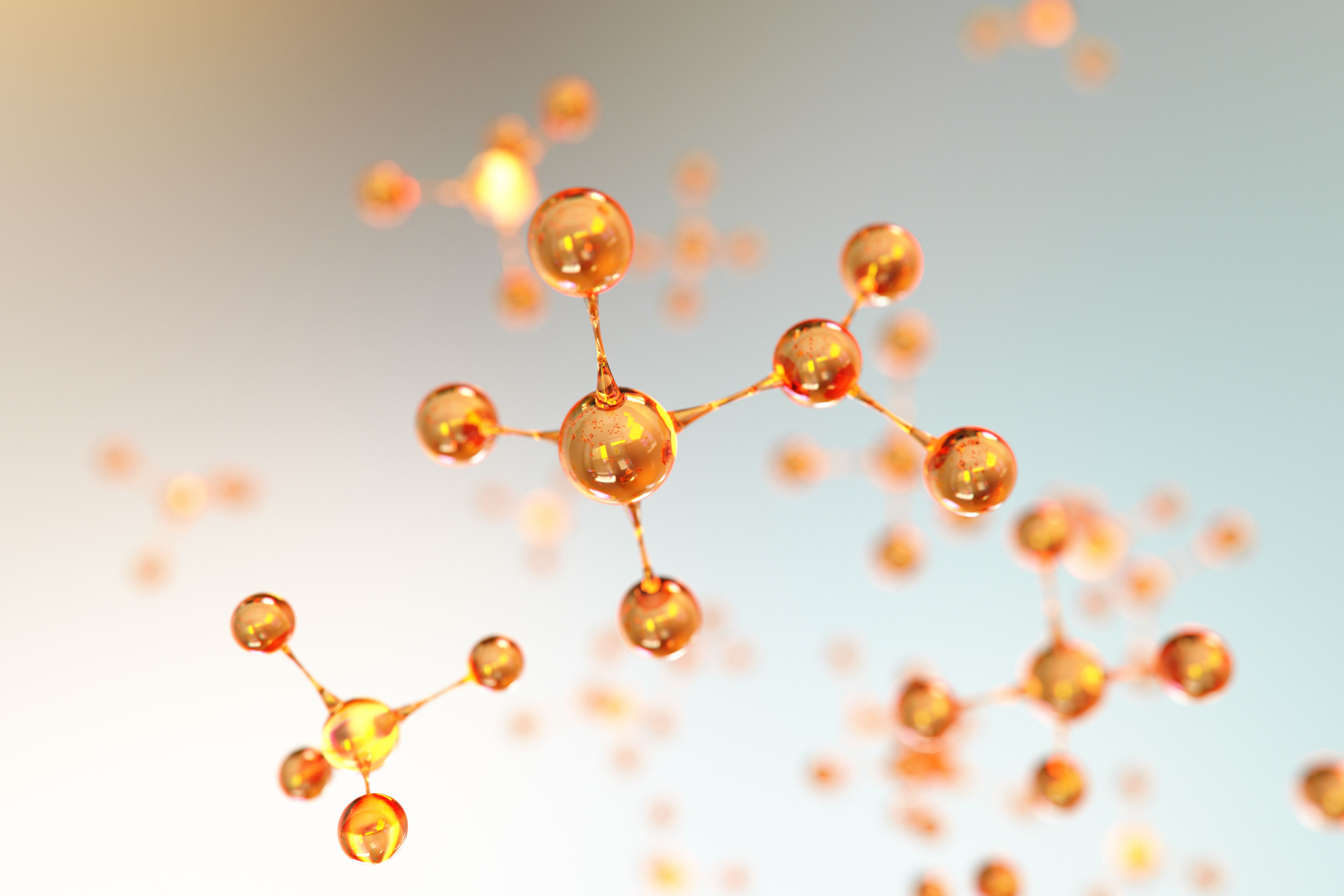Abstract Molecule Background | Image Credit: © Connect world - stock.adobe.com

In a recent study, a team of researchers revisited methoxyacetone and discovered more about its photochemistry and infrared (IR) spectra.
Recently, Igor Reva and his team at the University of Coimbra in Portugal explored the conformational space of methoxyacetone (MA) and learned more about its structural dynamics and behavior at varying energy states. Their findings were published in the journal Spectrochimica Acta Part A: Molecular and Biomolecular Spectroscopy (1).
Abstract Molecule Background | Image Credit: © Connect world - stock.adobe.com

Reva and his team’s investigation of the mechanistic interpretation of MA's photochemical behavior provided crucial insights into its reactivity under UV light, unraveling pathways toward the formation of key photoproducts.
The research revealed insights into MA's molecular arrangements. The study was conducted using computational methods at the MP2/6–311++G(d,p) and DFT(B3LYP)/6–311++G(d,p) levels (1). The team predicted four distinct conformers of MA, primarily arising from internal rotations around specific dihedral angles (1).
Out of the four conformers that were predicted, the Trans-trans conformer (abbreviated as Tt), was the most stable configuration, whereas the gauche conformers, abbreviated as Tg and Cg, exhibited higher energies in the 3– kJ/mol range (1). As a result, Tg and Cg accounted for a large percentage of the room temperature–gas phase equilibrium (1).
The research team also looked at the signatures of the conformers, finding that some of them remained undetectable, even when exposed to UV radiation. It suggested that during deposition, a conformational cooling process occurred (1).
The researchers also looked at the infrared (IR) spectroscopy of the MA monomers that were isolated in cryogenic argon matrices, which helped confirm the presence of the Tt conformer in the samples (1). Furthermore, the team successfully assigned the IR spectrum of the dominant Tt form using advanced anharmonic DFT computations, enriching the understanding of its spectroscopic characteristics (1).
There was one interesting observation the researchers noted in the study when they exposed MA to UV irradiation in the 300–260 nm range. The process unveiled a photolysis mechanism, indicative of the Norrish type II mechanism (1). This led to the observation of a cage-confined intermediate photoproduct—an enol acetone and formaldehyde dimer—preceding the formation of carbon monoxide as the predominant photoproduct, a result of the Norrish type I photoreaction (1).
This article was written with the help of artificial intelligence and has been edited to ensure accuracy and clarity. You can read more about our policy for using AI here.
(1) Sharma, A.; Gupta, V. K.; Reva, I. Methoxyacetone Revisited. Spectrochimica Acta Part A: Mol. Biomol. Spectrosc. 2024, 308, 123651. DOI: 10.1016/j.saa.2023.123651
New Study Shows FT-MIR Spectroscopy Can Authenticate Parmigiano Reggiano Farming Practices
March 11th 2025A new study published in the Journal of Dairy Science demonstrates that FT-MIR spectroscopy can effectively authenticate farming practices and dairy systems in Parmigiano Reggiano production but has limited ability to verify animal welfare parameters.
Smart Farming Using AI, IoT, and Remote Sensing
March 4th 2025A study by researchers at Universidad de Talca in Chile explores the integration of artificial intelligence (AI), the Internet of Things (IoT), and remote sensing to modernize modern farming. The research highlights how these technologies optimize resource use, improve crop yields, and promote sustainable agricultural practices.